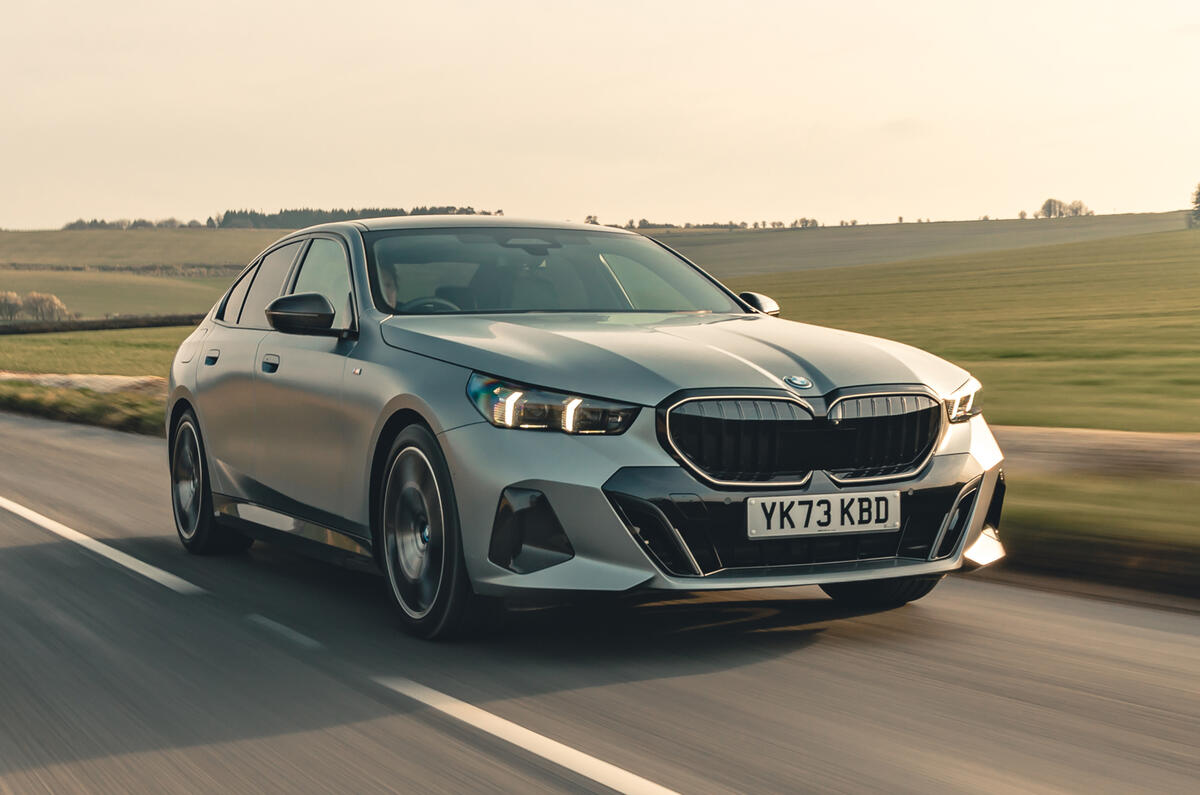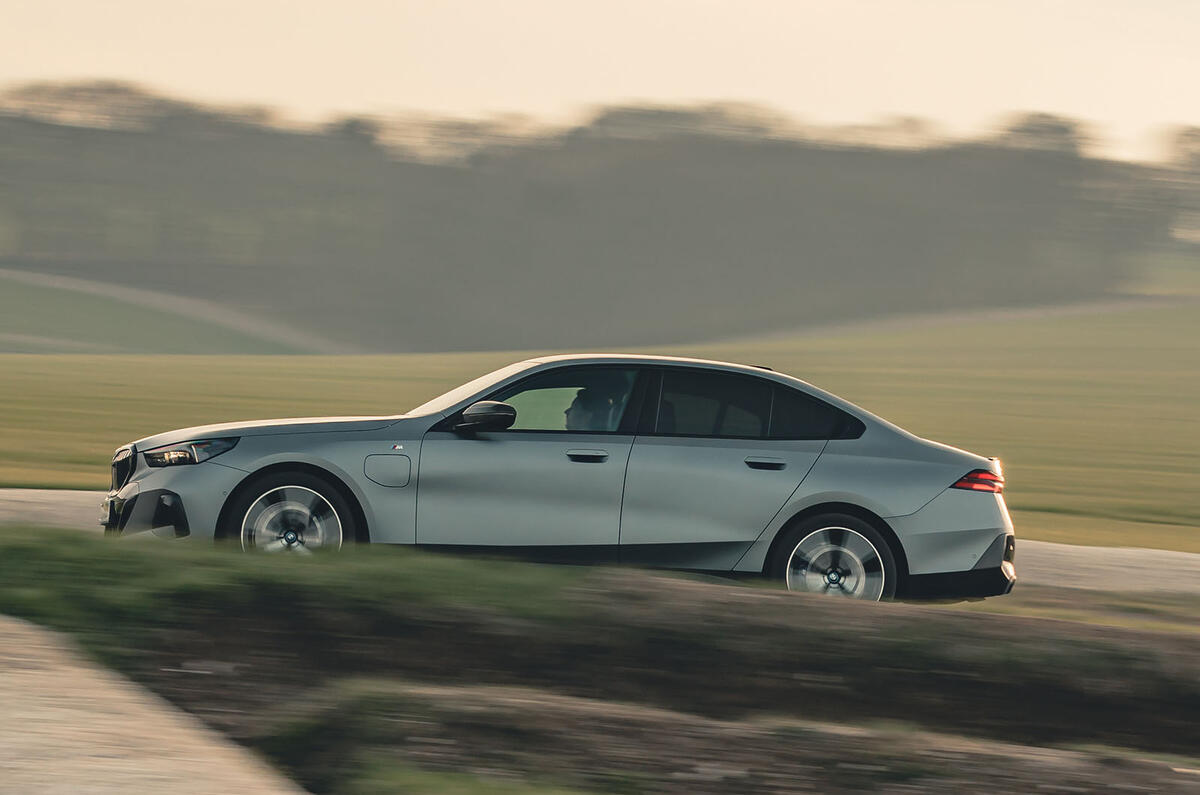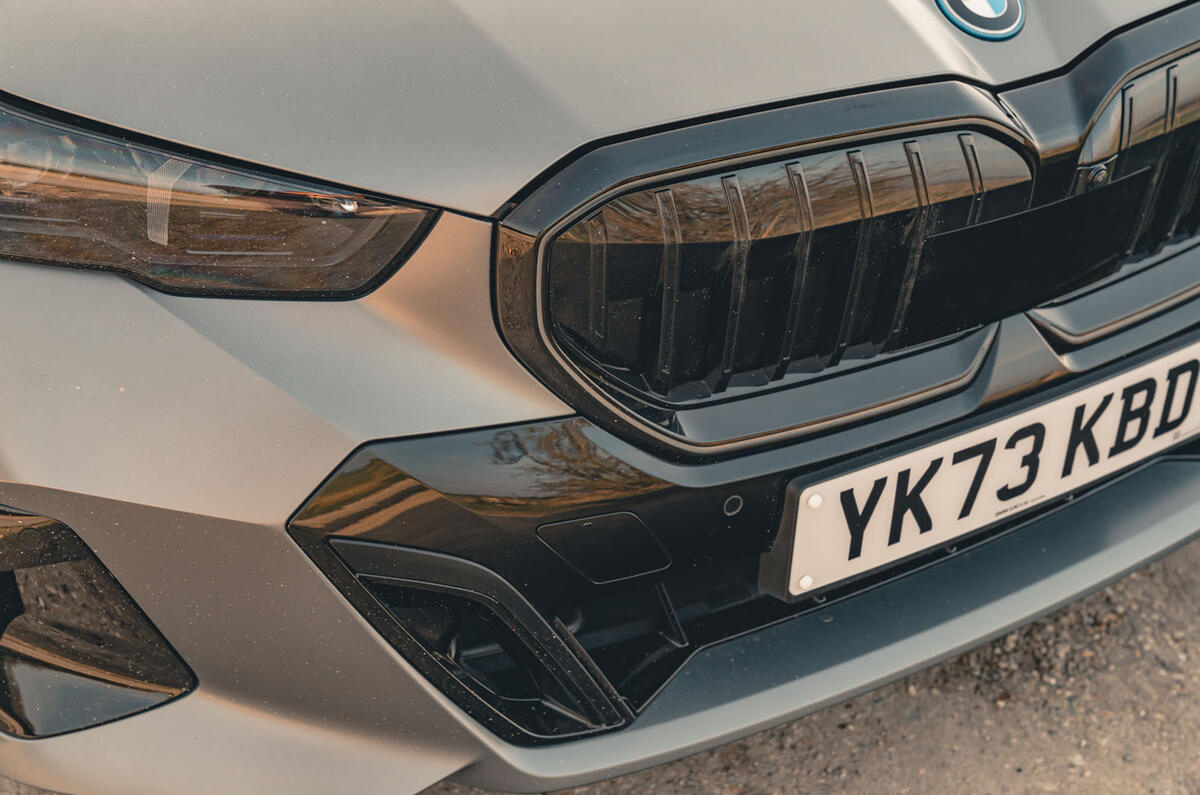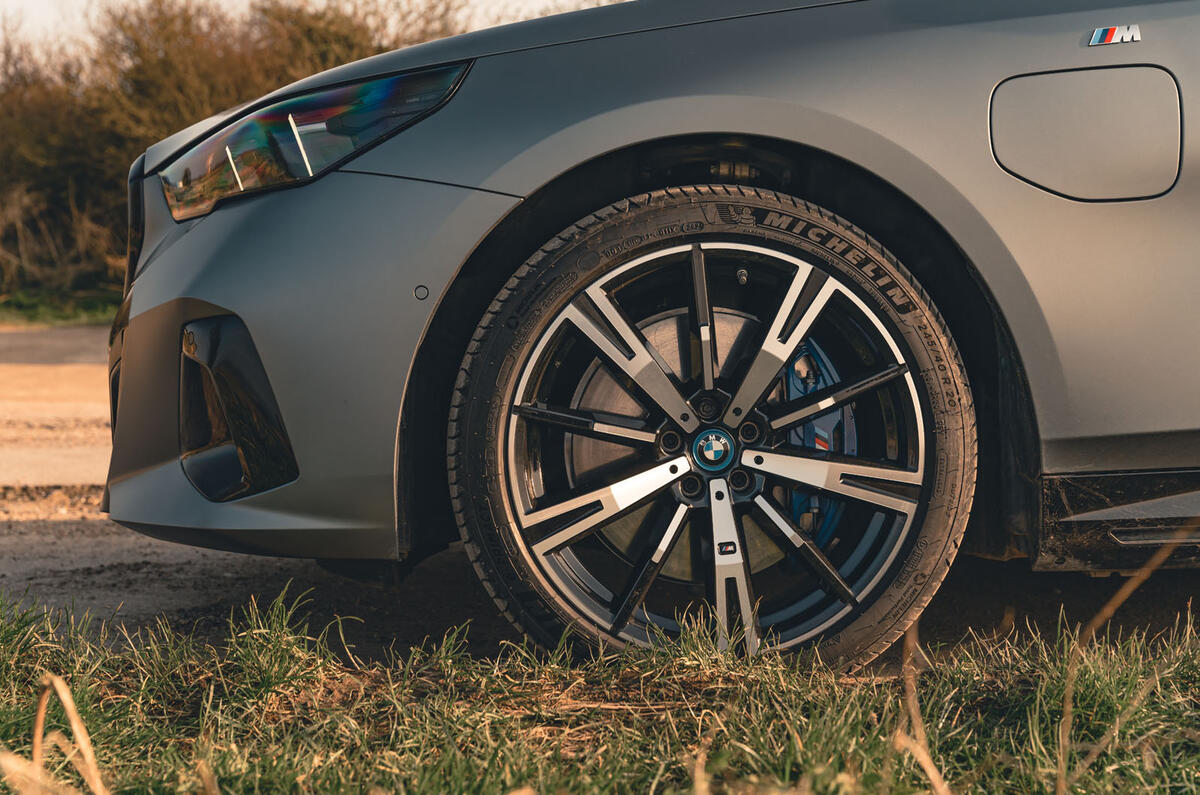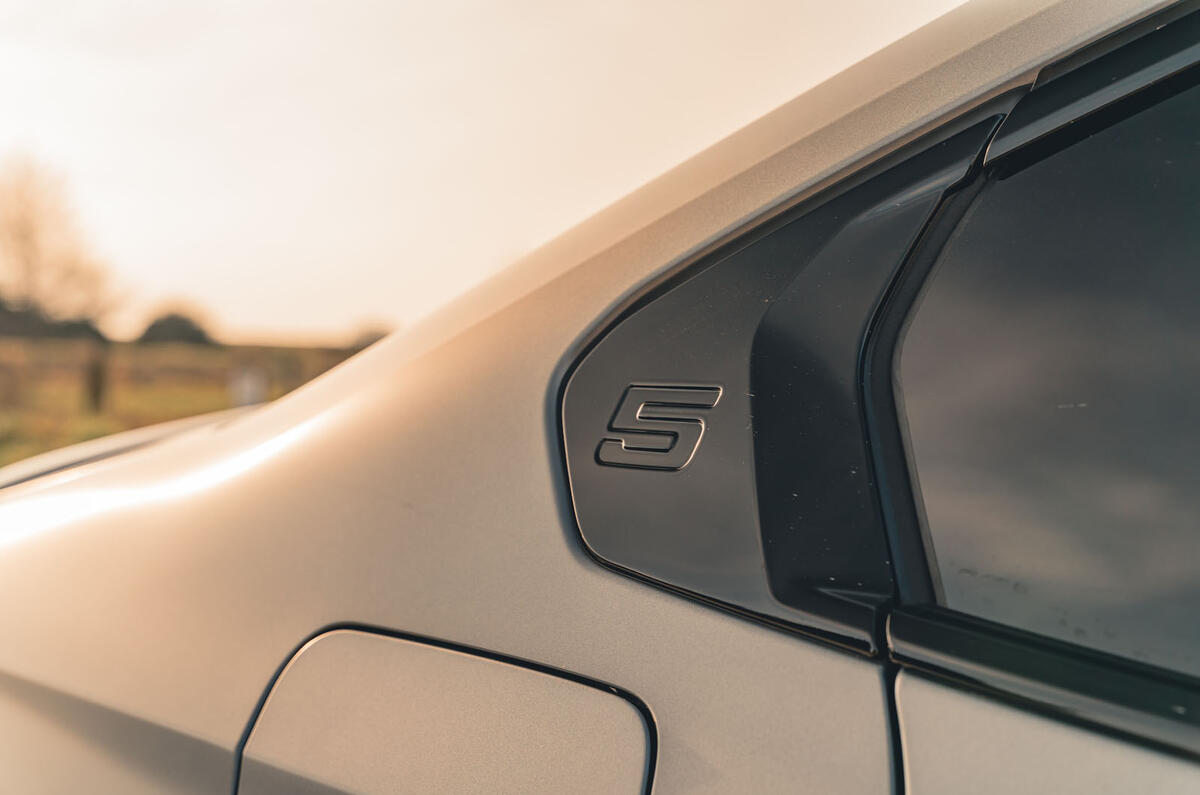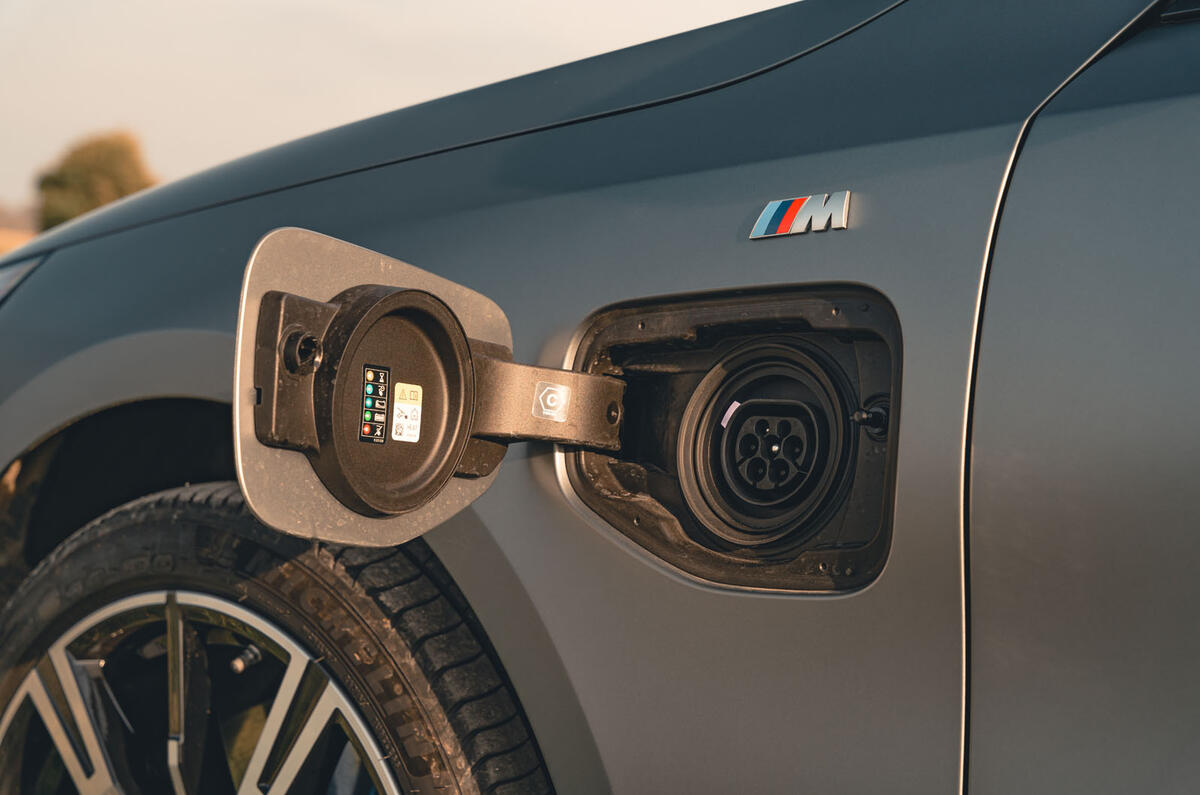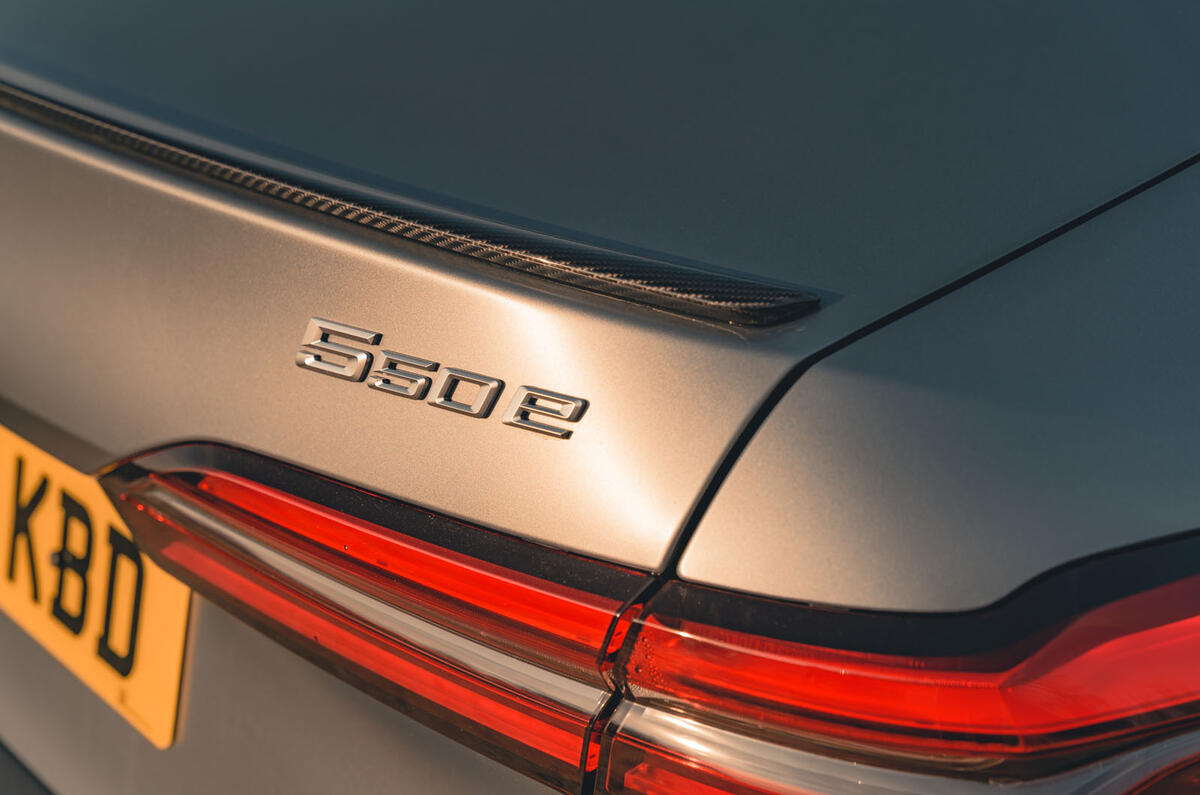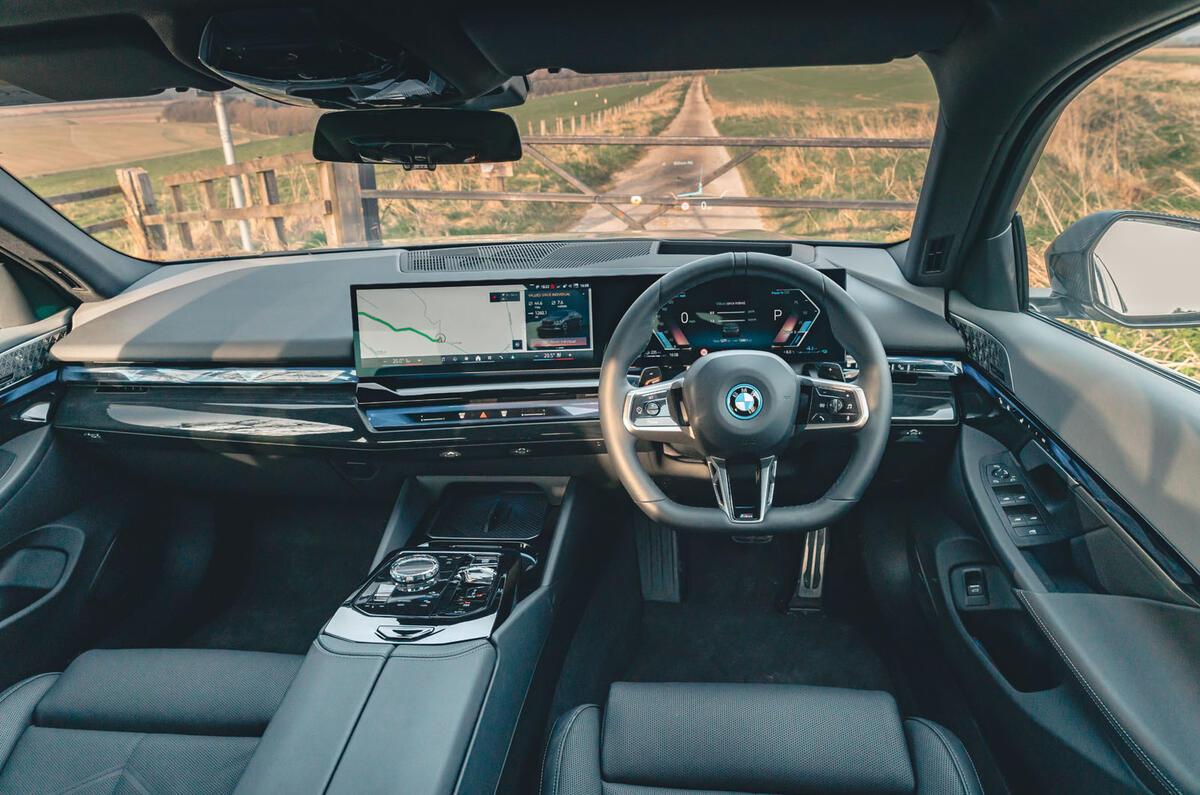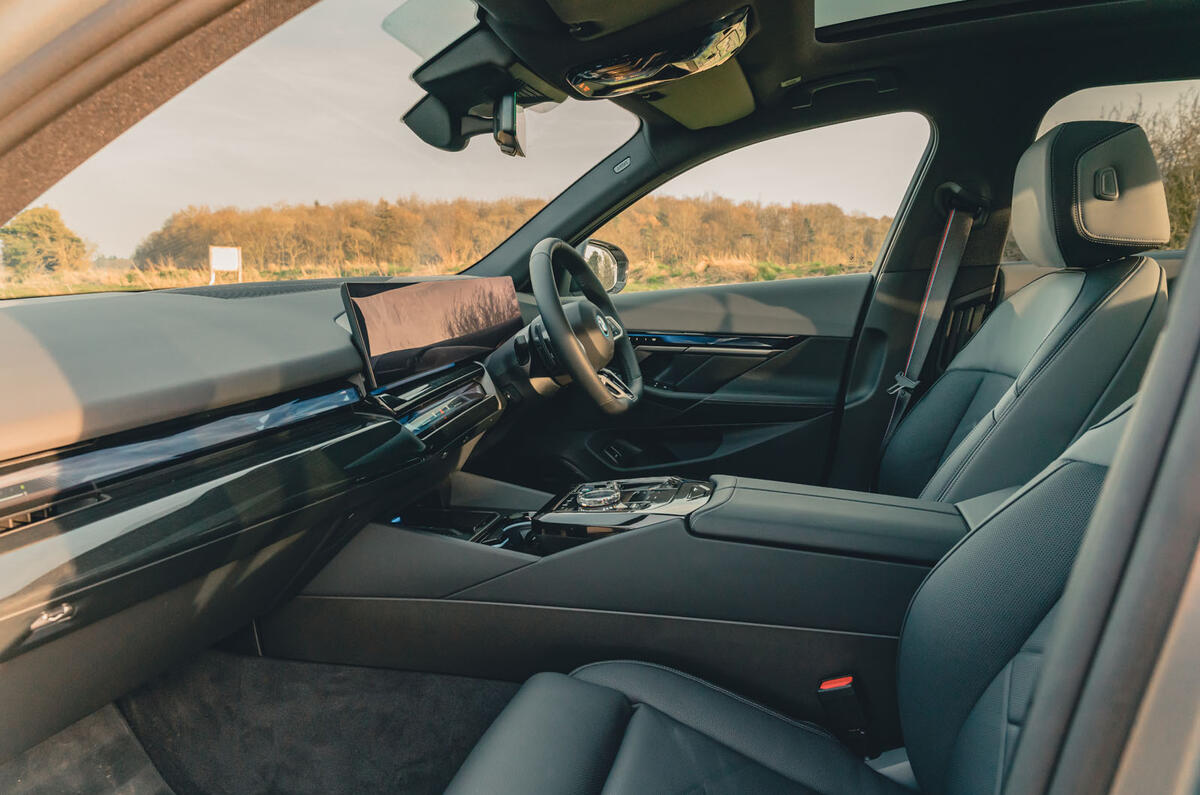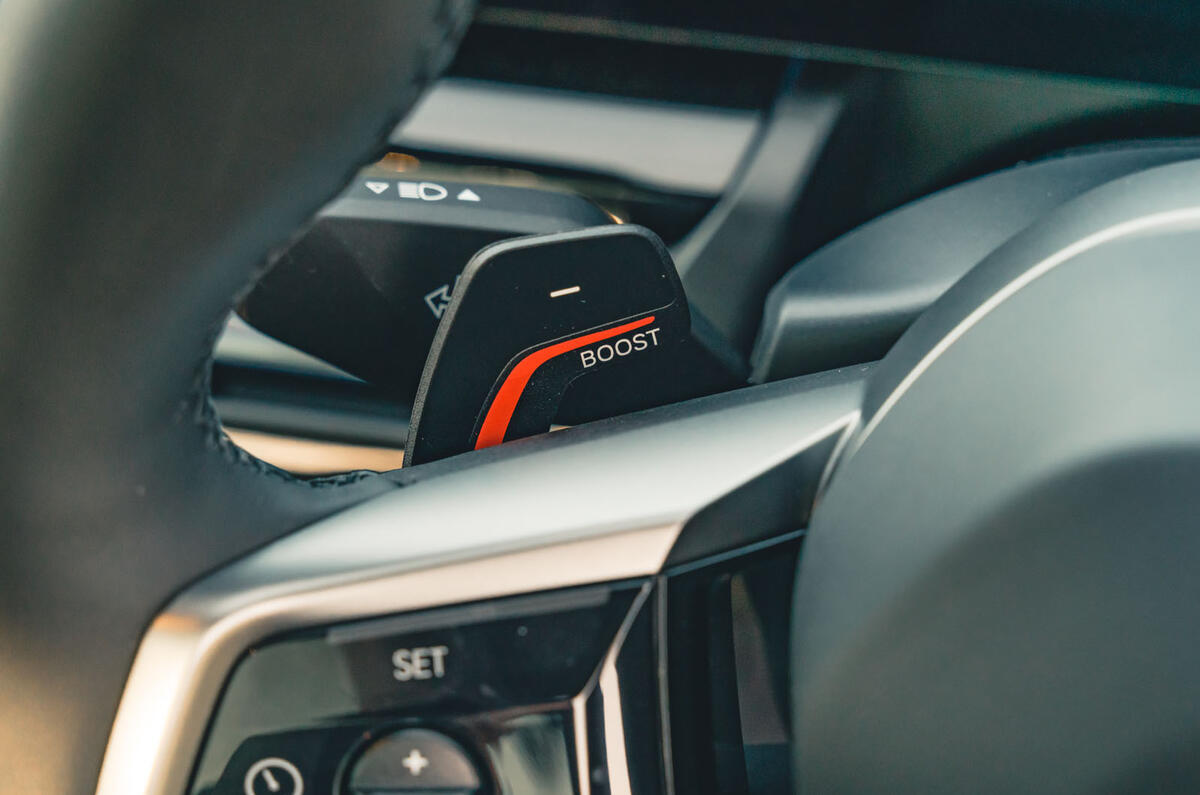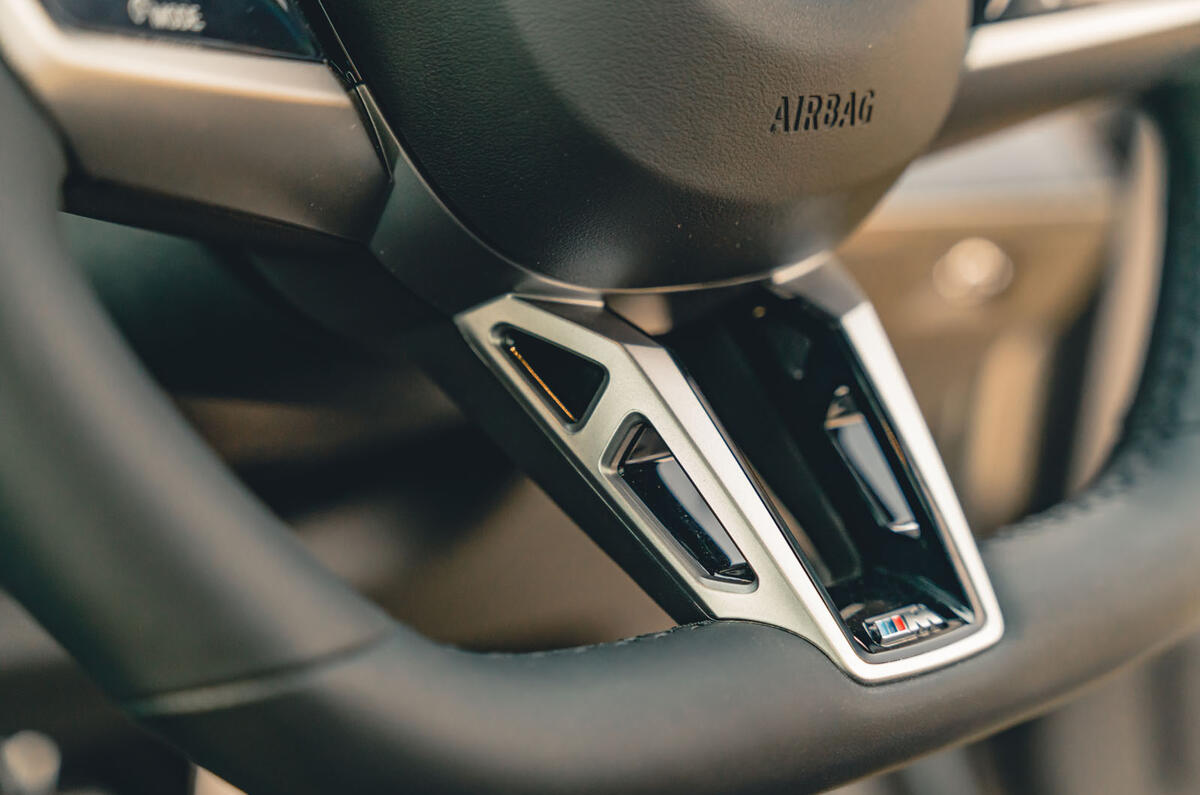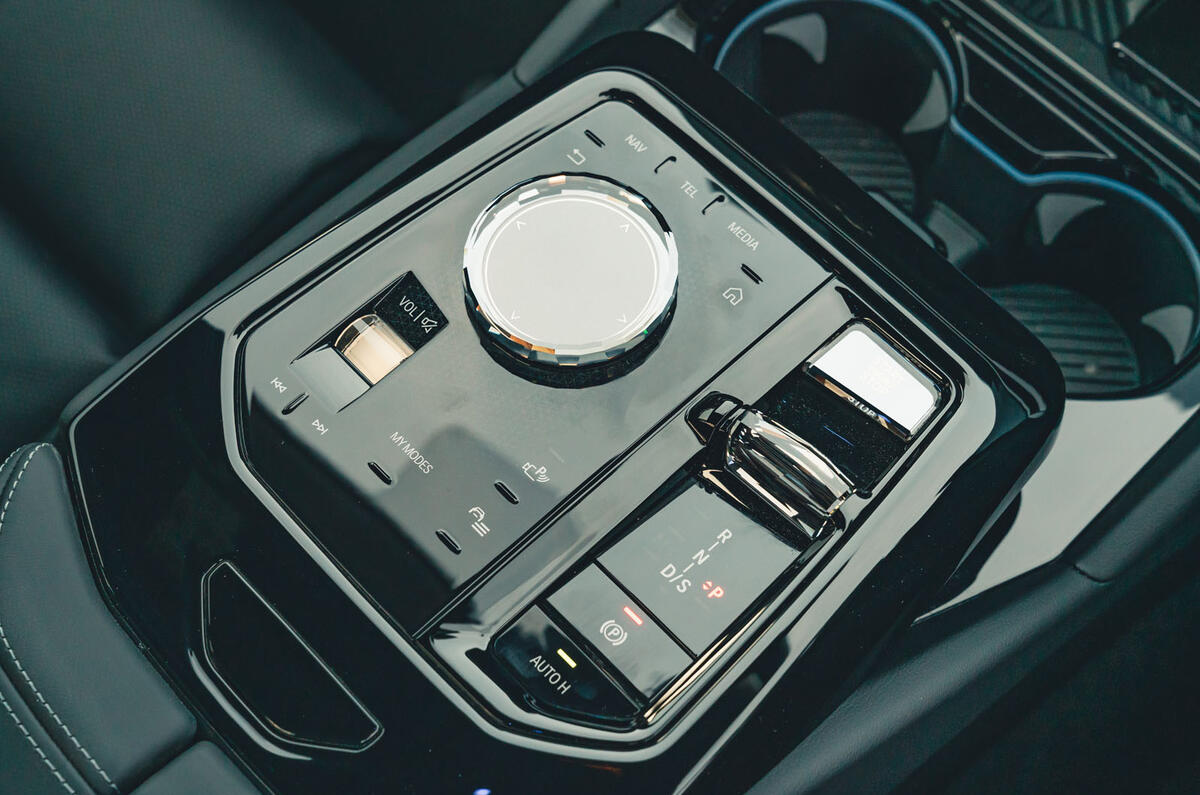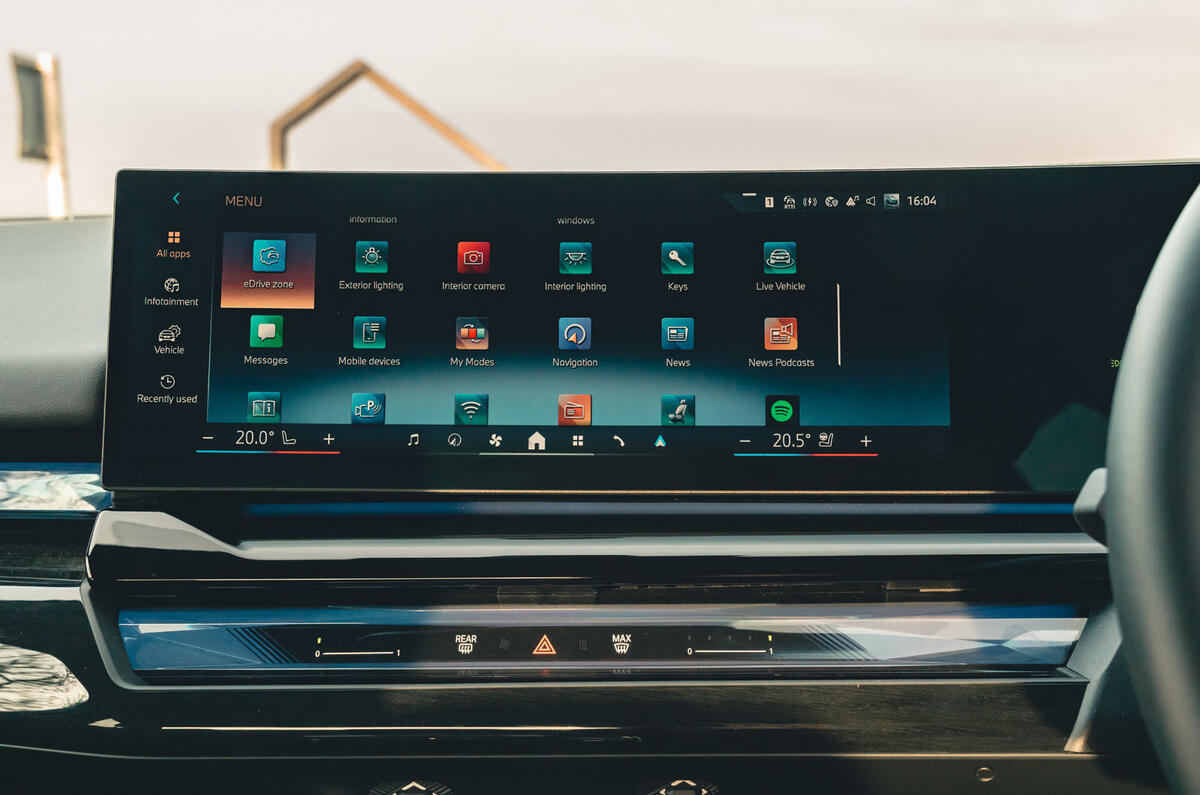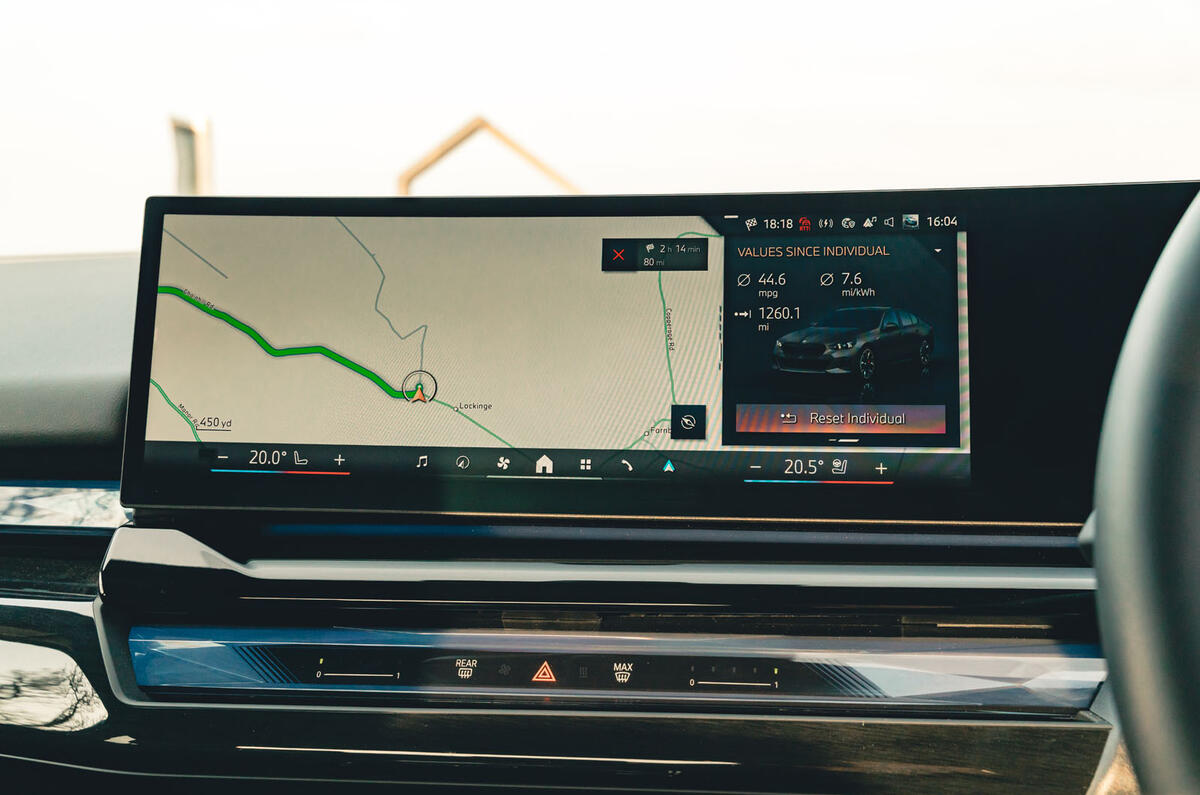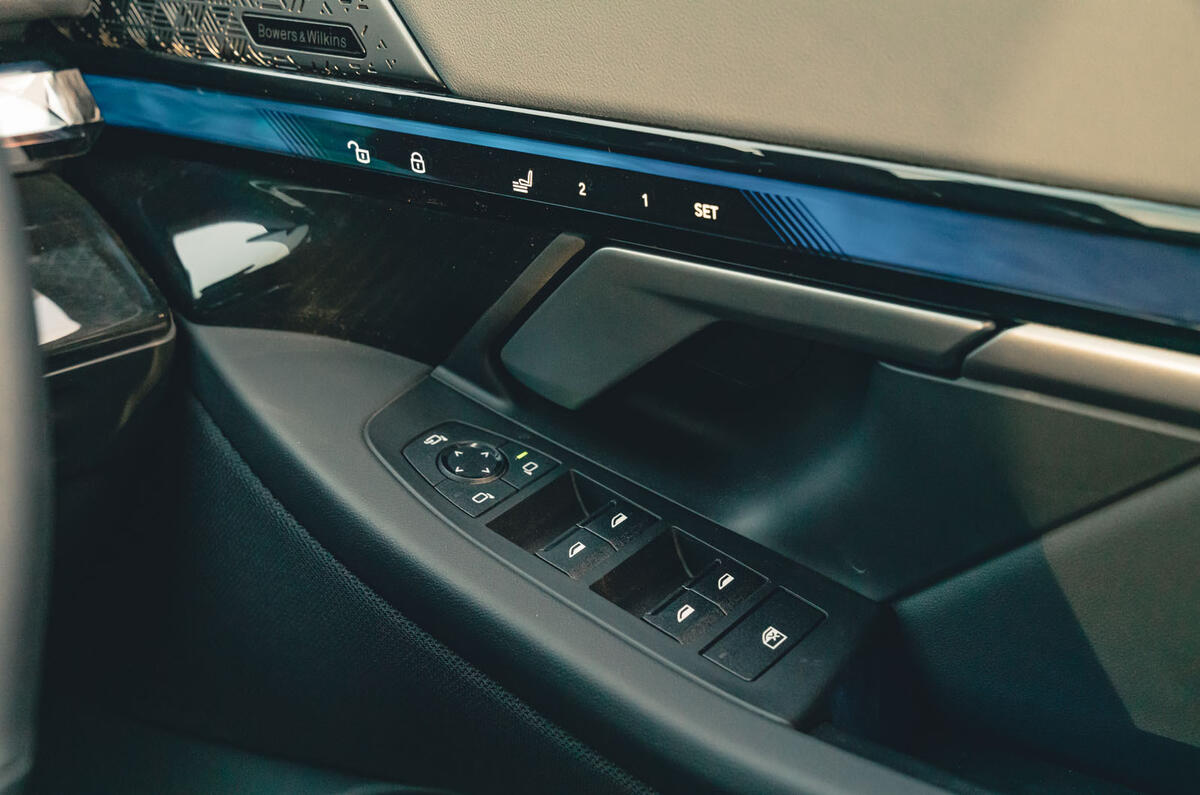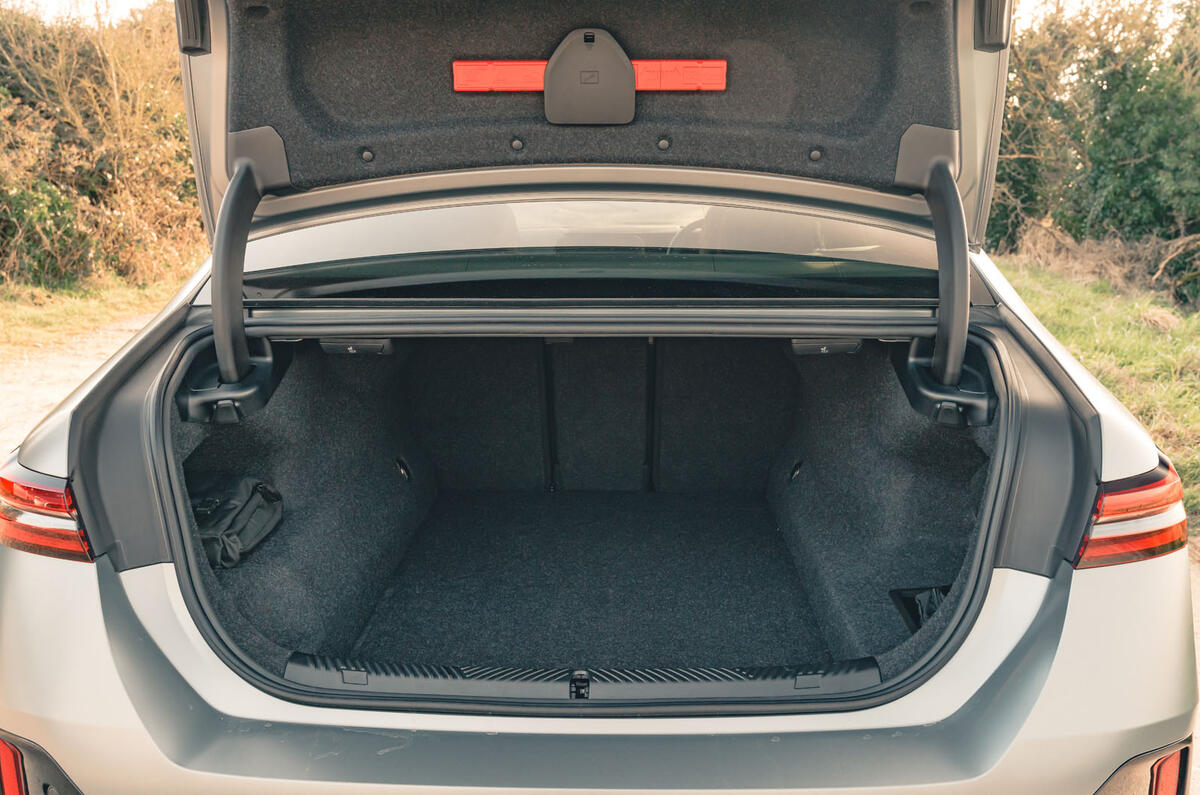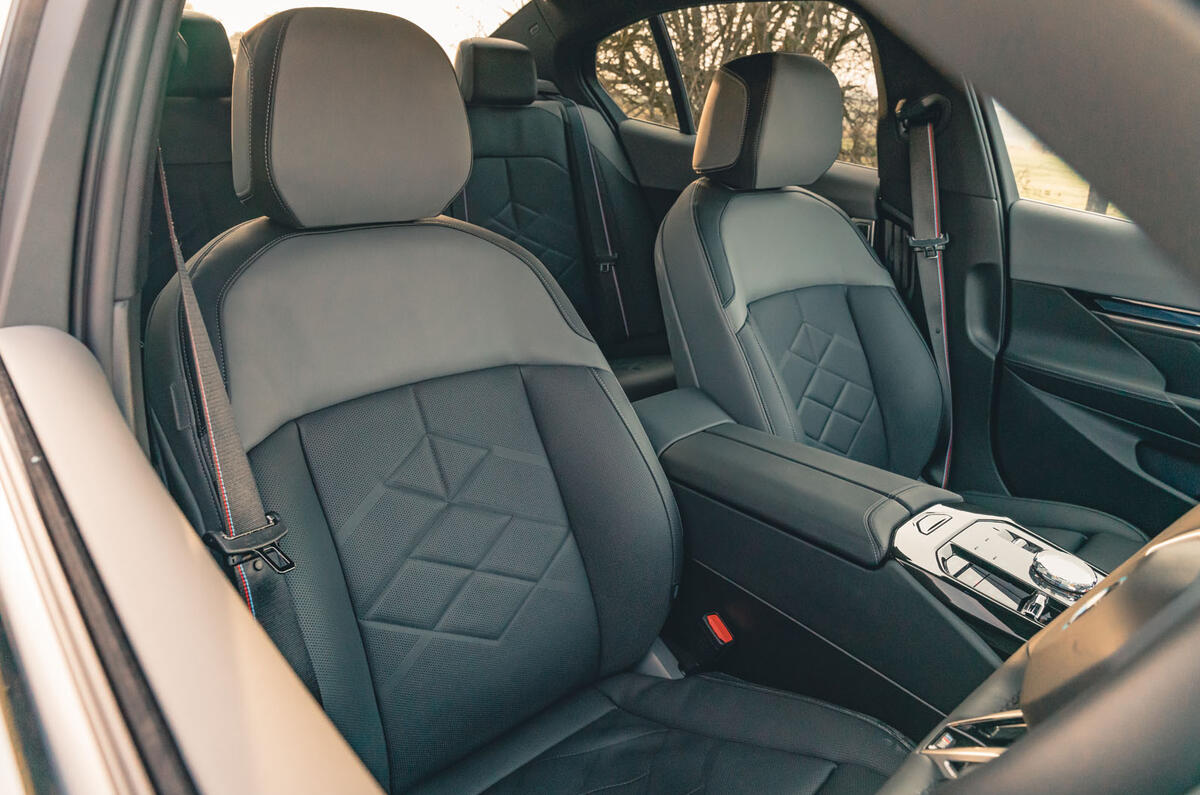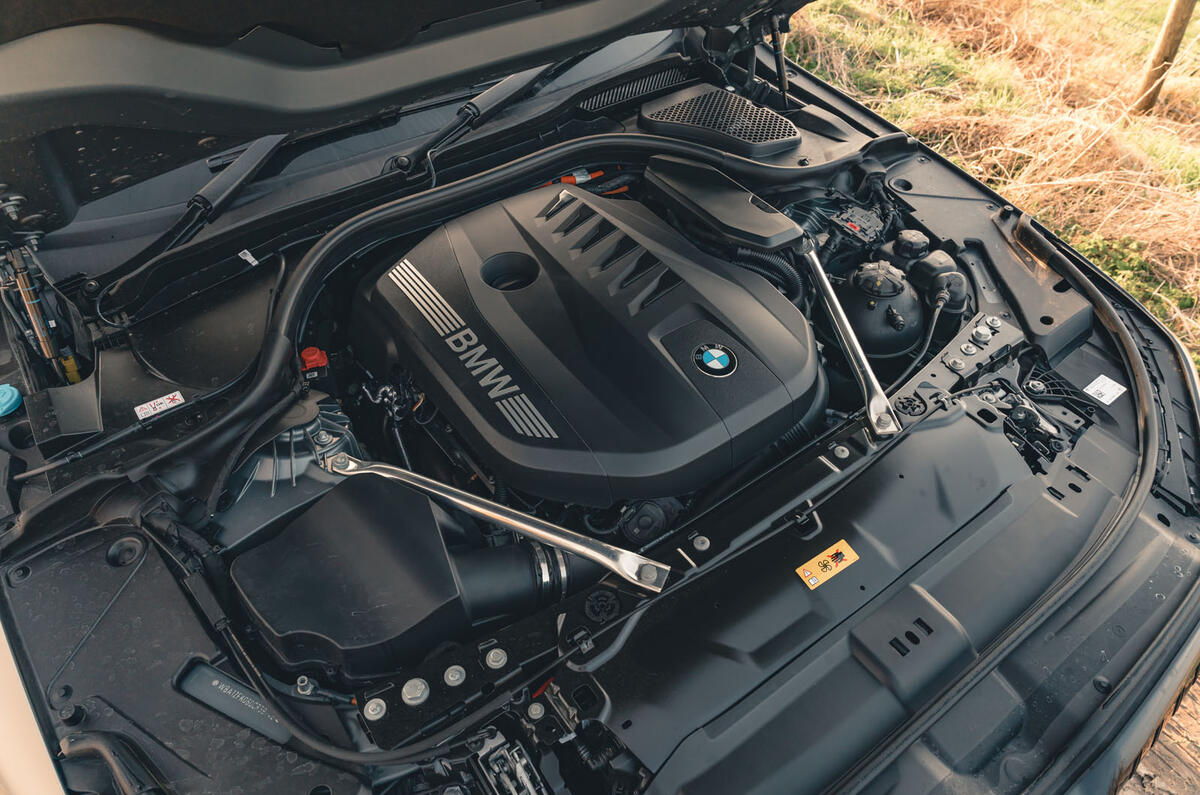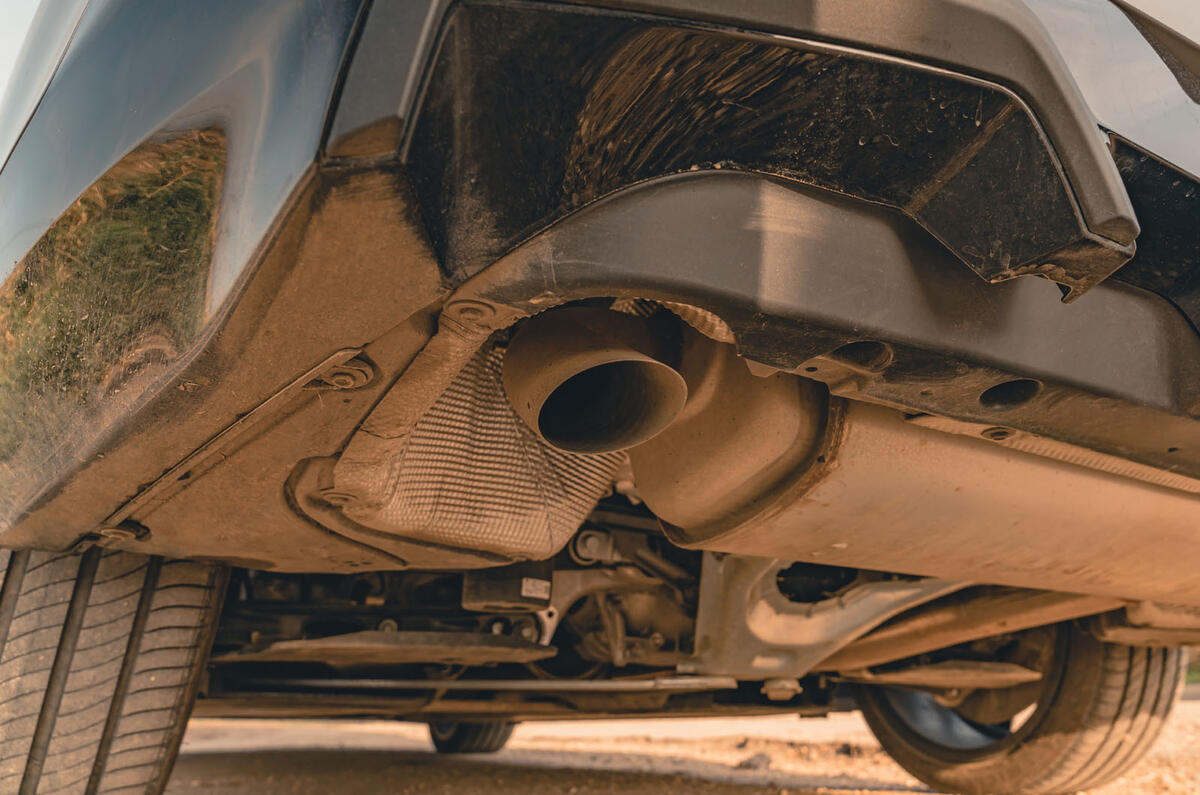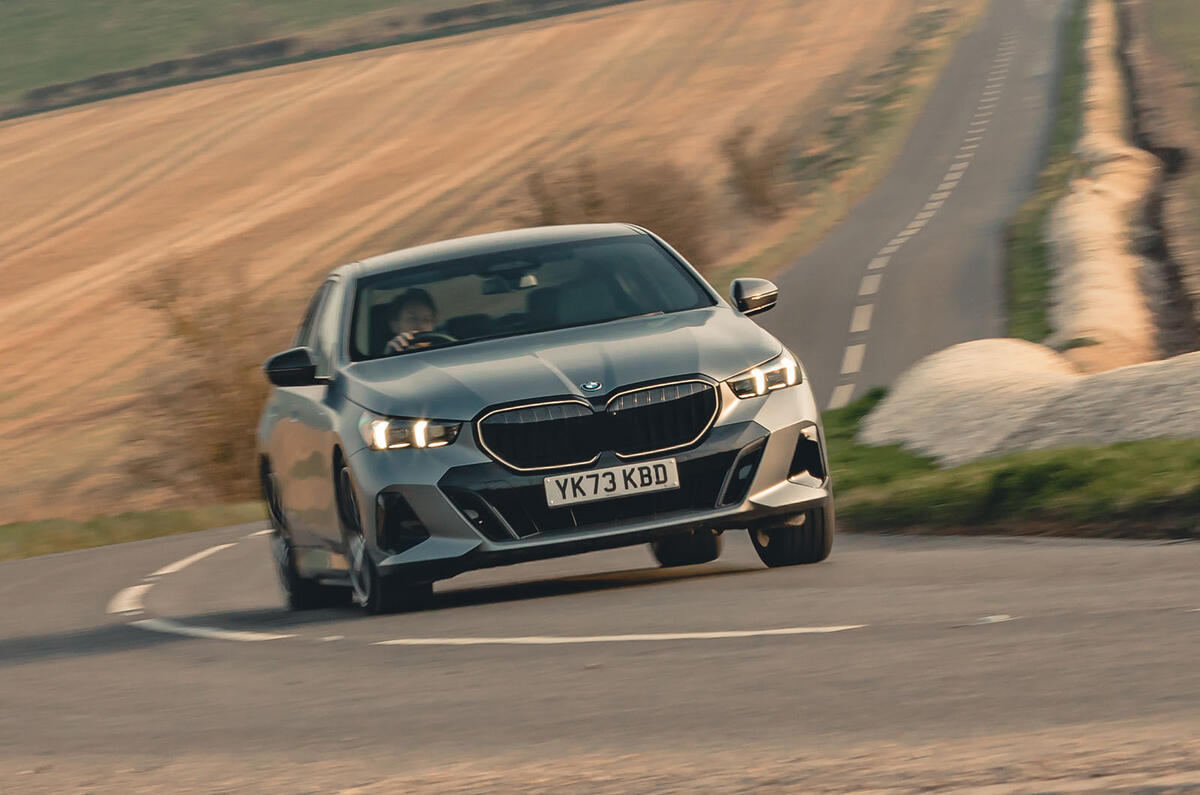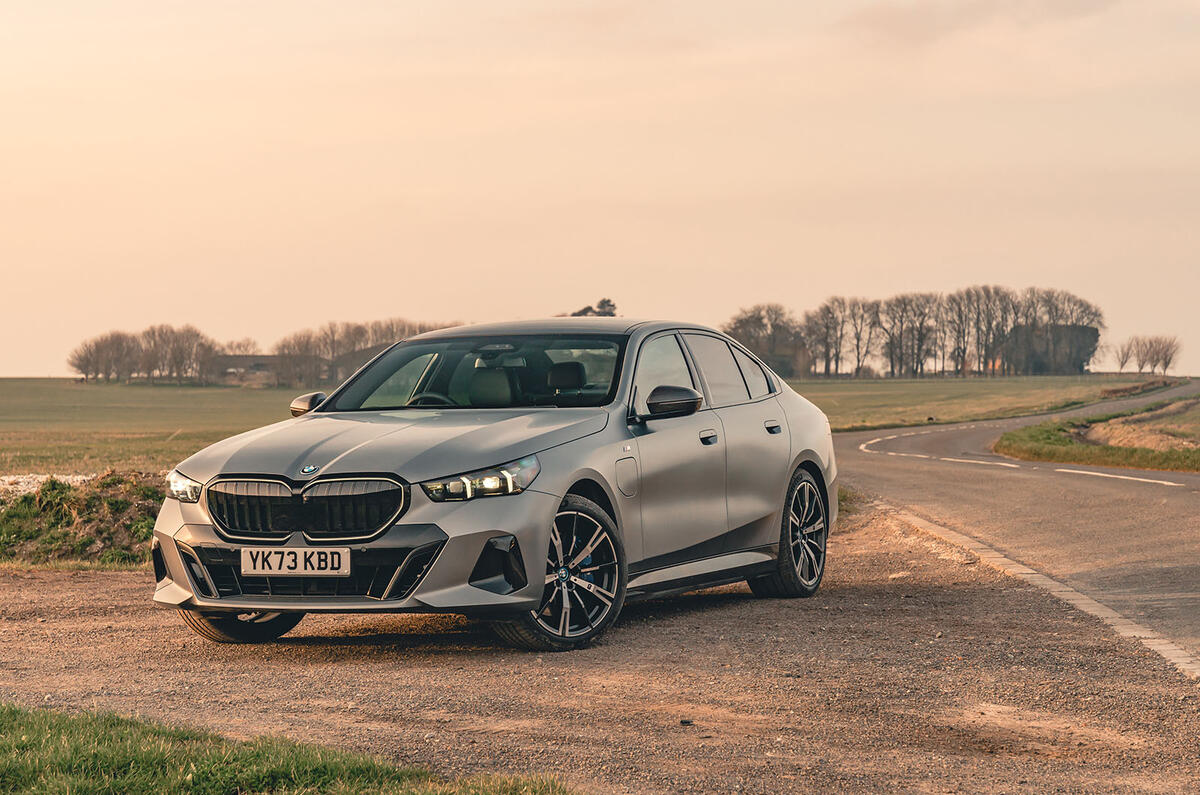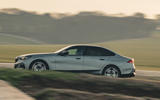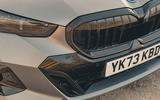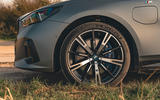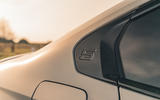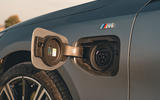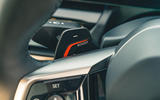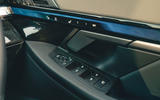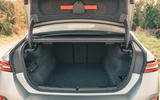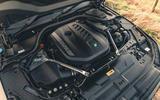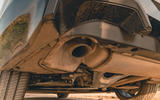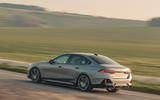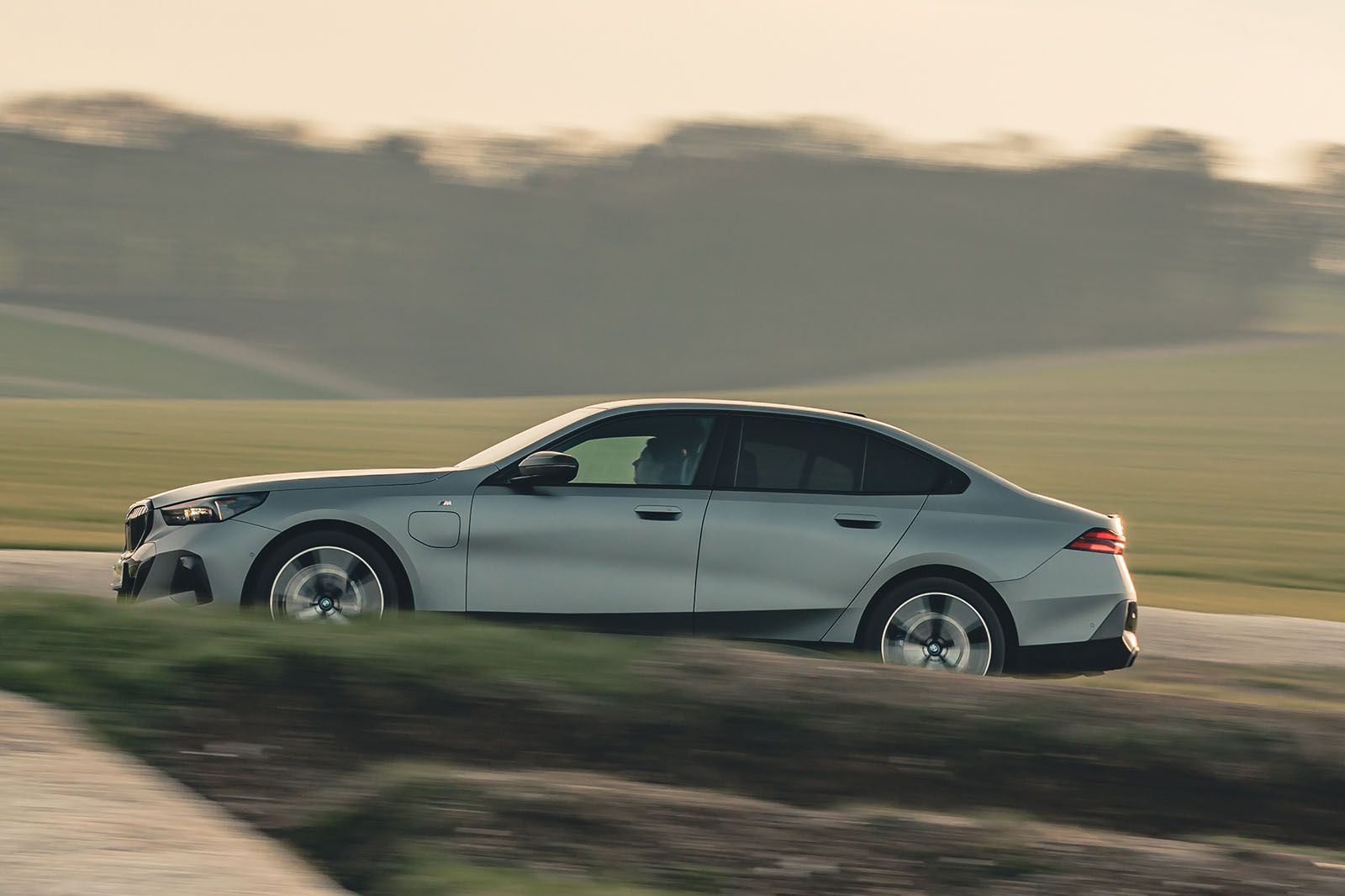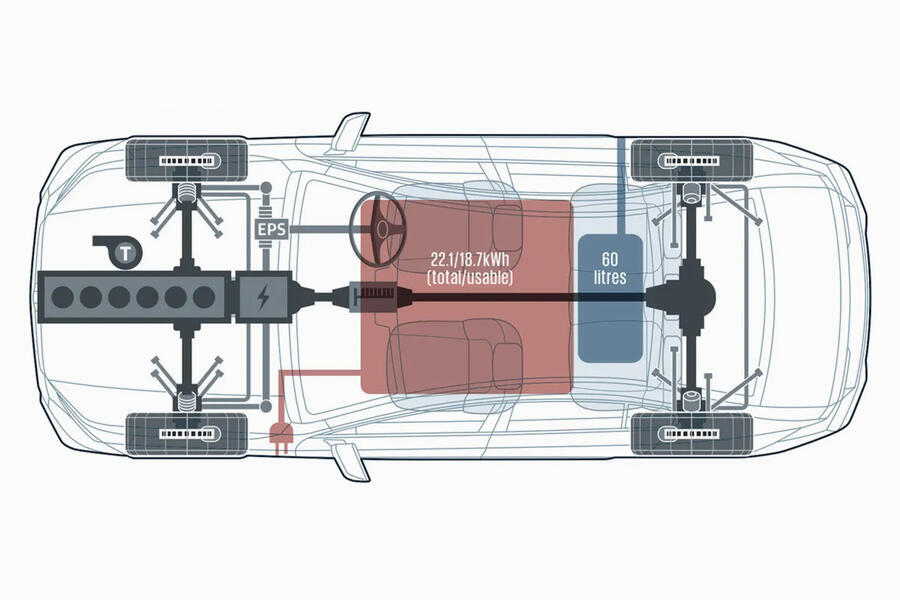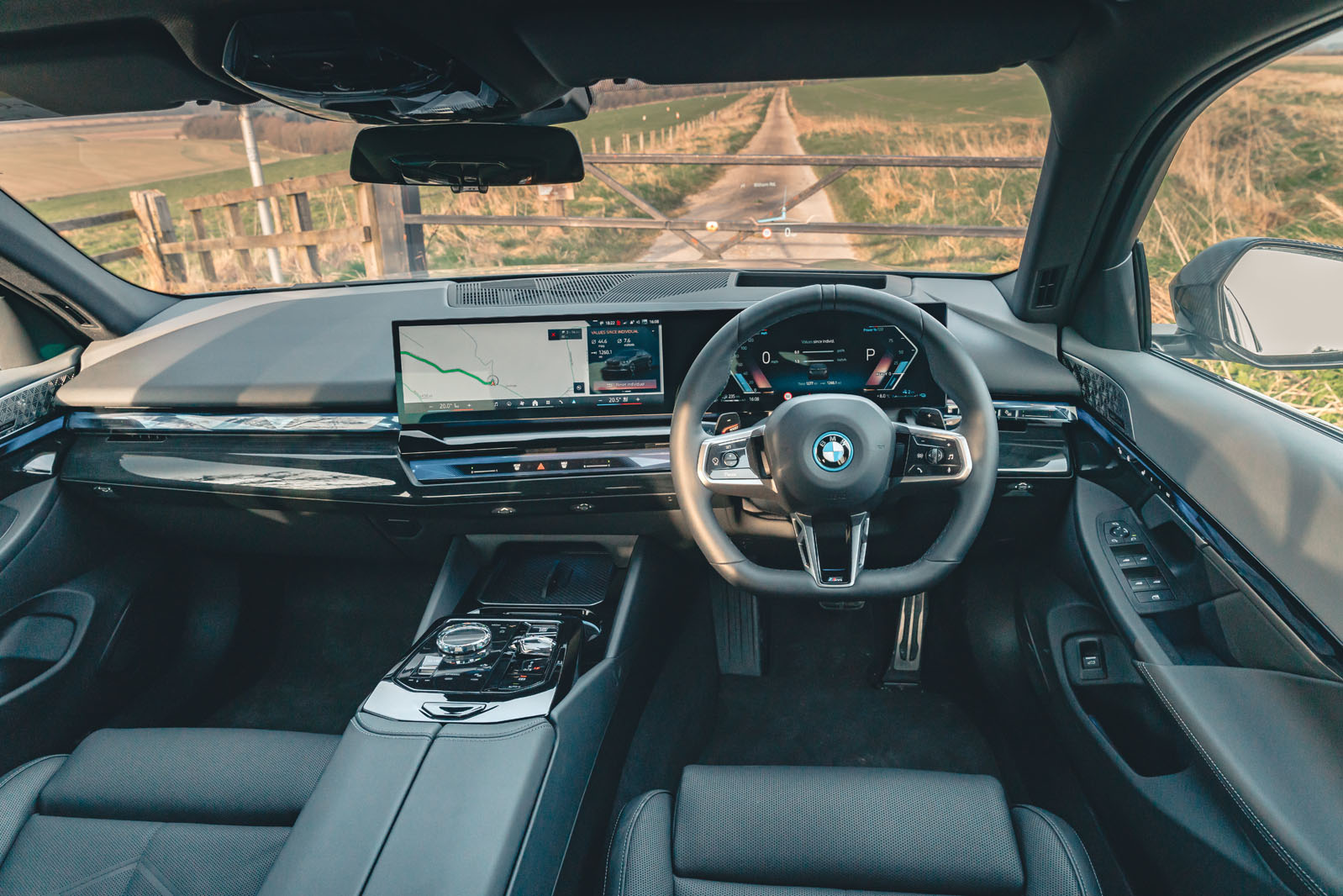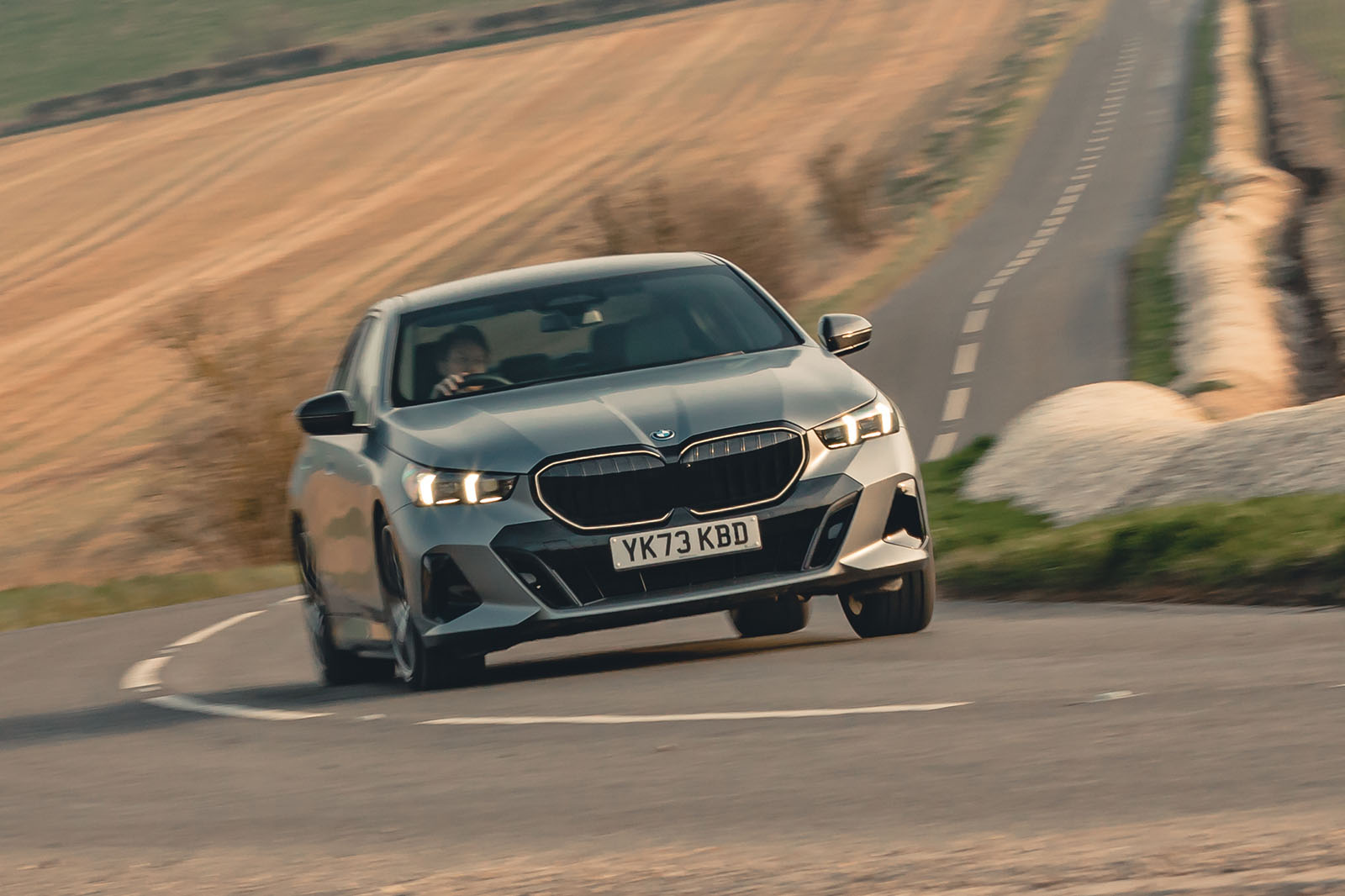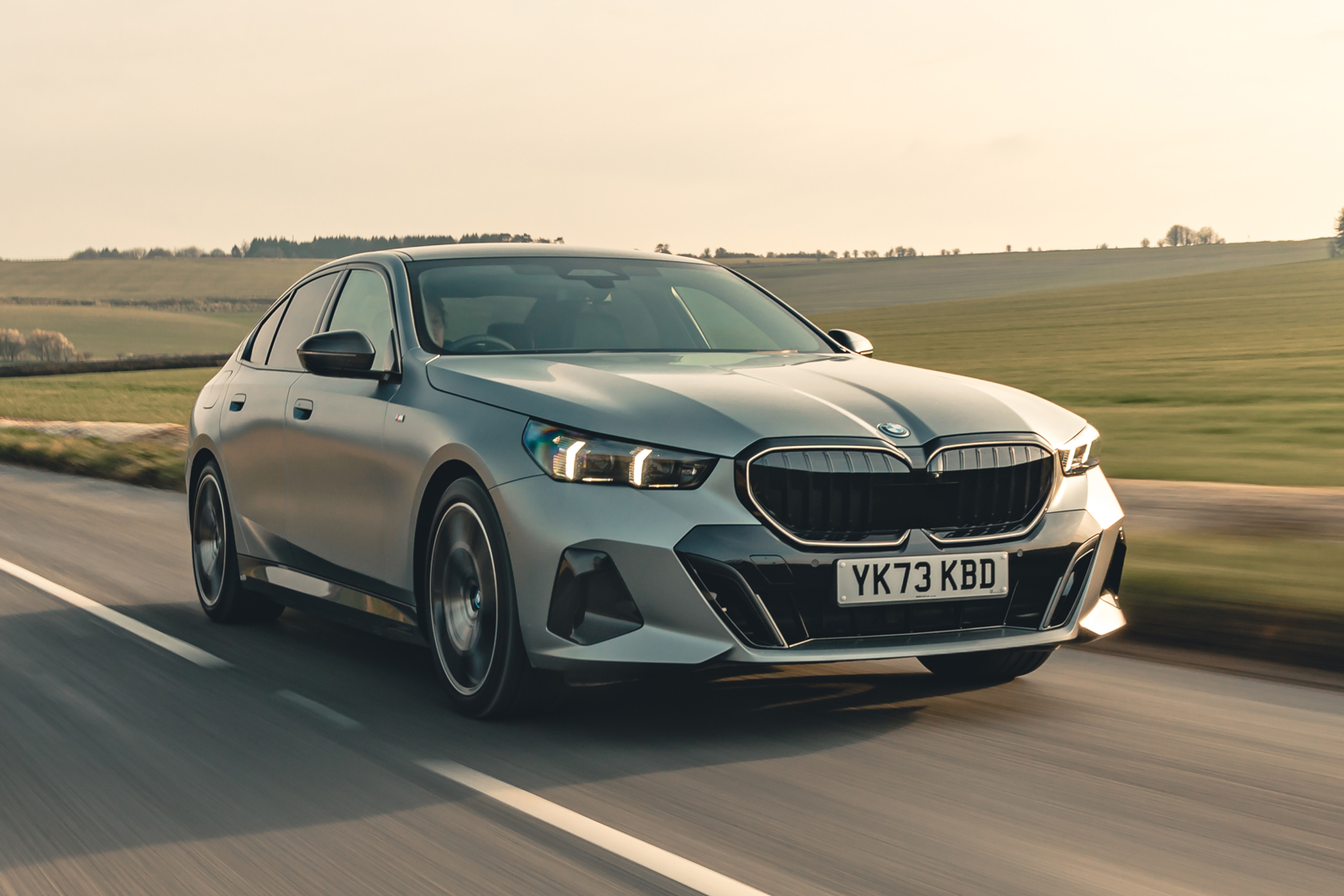If you like the interior of the new BMW 7 Series, you will like that of this 5 Series.
Of course, the opposite is also true. Whatever your view, it is undeniable that this represents the greatest generational shift for the 5 Series’ cabin since the iDrive system’s debut 23 years ago.
Yes, BMW’s slide into the world of touch-sensitive screen-based controls and expansive high-resolution displays continues apace here. While the infotainment remains characteristically angled towards the driver, the only other tangible vestige of the old 5 Series is the rotary iDrive controller on the transmission tunnel, though even this is now rendered for visual impact, being in the style of cut glass, with angular facets if you ticked the box for ‘Crafted Clarity’.
Crystalline influence is also found on the convex dashboard. A strip of backlit plastic, which extends along the door cards, is from the 7 Series. On acquaintance it is quite arresting, and its colour-configurability results in a nice night-time ambience. However, in direct sunlight the smudges from any prodding of controls (for the door locks, air vents and headlights) are unsightly. The commands themselves are also not responsive enough. Even firing up the hazard lights often requires a second go. BMW is not alone when it comes to this sort of frustration, mind.
In terms of digital integration of common controls, thankfully the 5 Series doesn’t go as far as some. Wing mirrors, volume, gear selector – all remain in the realm of things you can twist or push. However, climate controls are almost entirely digital, and while the useful shortcuts that surround the iDrive rotary remain, they are harder to press at a glance. Indeed, all testers found they had to look away from the road more than was desirable.
Another observation was that while build quality remains undeniably high in the 5 Series, materials quality isn’t what it was. There is too much gloss black, and a few too many uninspiring plastics.
Driving ergonomics are good, however. The hip point feels a touch high compared to previous generations, but the relationship between ankle, hip and hands is pedigree, with 20mm improved adjustability in the steering column and seat.
This is also a vast cabin, at least in the context of a mid-size saloon (which arguably the 5 Series no longer is). Up front, elbow room is 7 Series-esque, and oddment storage excellent, though rear leg room and boot space could better reflect the 5 Series’ dimensions. Then again, because the battery for the electrified models is carried under the cabin floor, boot space is largely unaffected in those versions and stands at more than 500 litres.
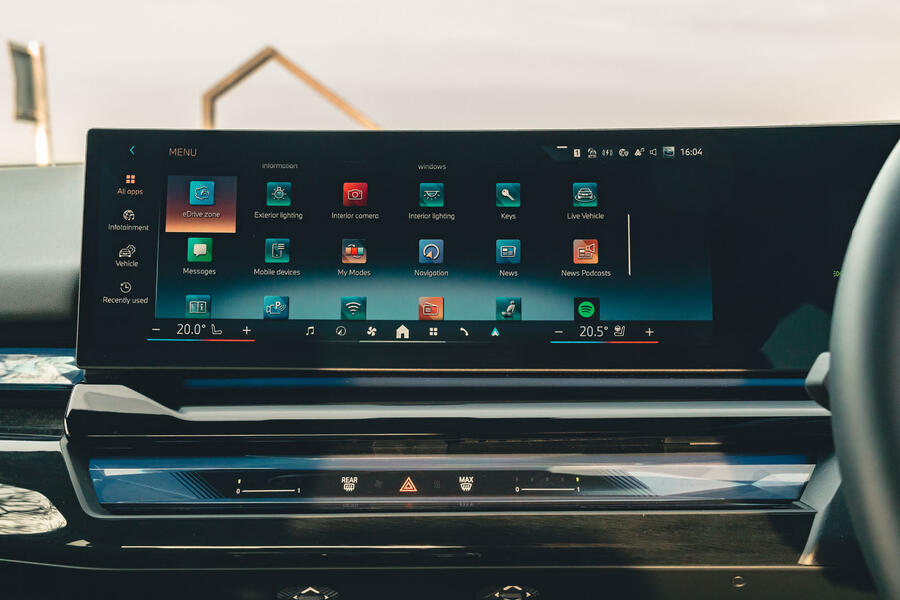
Multimedia system
We are now onto BMW’s iDrive Operating System 8.5 infotainment generation. Just as it does in the iX and i7, the system incorporates the heater controls, seat adjustment controls, interior lighting controls and many other functions you might expect to find physical switchgear for.
The system’s saving grace for drivers is that there’s still an iDrive-style cursor controller on the centre console. However, there’s no cursor controller on the steering wheel (like Mercedes provides), and going through the main menu screen to find a particular function to adjust can be slow and distracting.
BMW tries to provide shortcut functions around the margins of the screen to make it easier to reach particular controls quickly, but they are small and fiddly to hit while driving. It's also possible to create additional shortcuts housed in a drop-down menu. However, these are still inferior to the old ow of numbered buttons that BMWs used to have, and you need to be logged in to the car with a myBMW account for the functionality to be enabled.
The navigation system is easy to program via voice command and its routes aree sensibe, is easy to follow, with excellent traffic updates. Equally, integration for both Apple CarPlay and Android Auto is slick, as per BMW’s usual standards.



